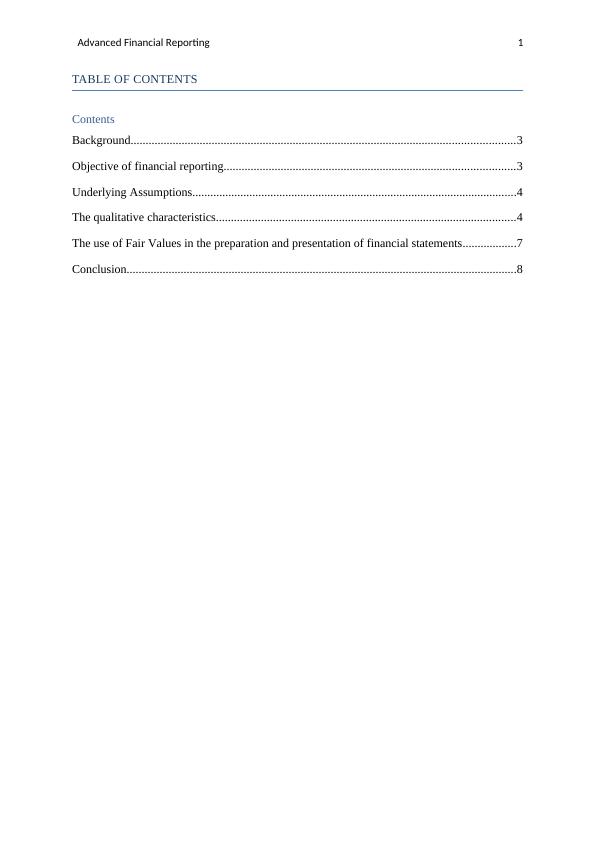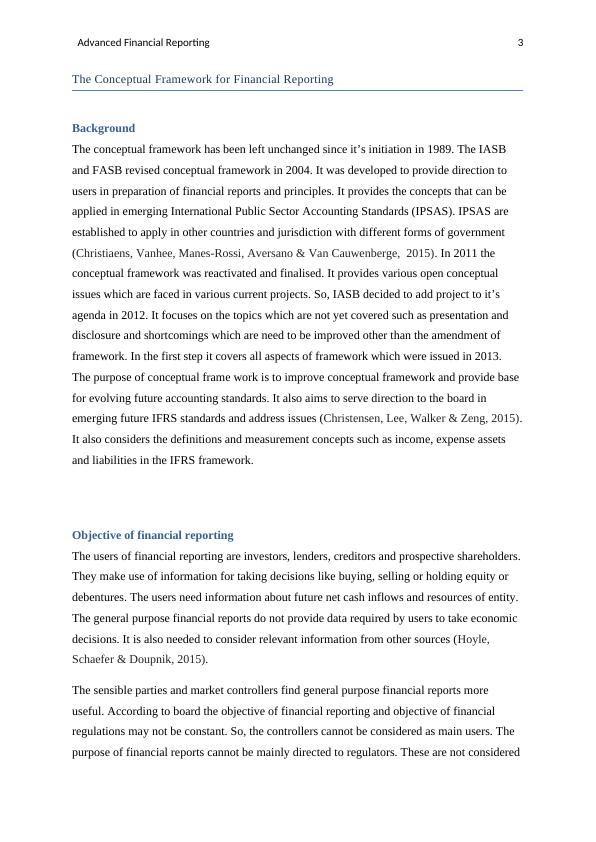Advanced Financial Reporting: Comparison of New Framework with 1989 IASB Framework
Critically discuss the scope of the new conceptual framework for financial reporting and compare it with the 1989 IASB framework. Also, discuss the arguments for and against the use of fair values in the preparation and presentation of financial statements.
14 Pages3917 Words442 Views
Added on 2023-06-15
About This Document
This report compares the new framework with the 1989 IASB framework on preparation and presentation of financial statements. It also discusses the use of fair values in financial statements and the qualitative characteristics.
Advanced Financial Reporting: Comparison of New Framework with 1989 IASB Framework
Critically discuss the scope of the new conceptual framework for financial reporting and compare it with the 1989 IASB framework. Also, discuss the arguments for and against the use of fair values in the preparation and presentation of financial statements.
Added on 2023-06-15
ShareRelated Documents
End of preview
Want to access all the pages? Upload your documents or become a member.
International Financial Reporting Standards : Assignment
|11
|2801
|30
Content and Application of the IASB Conceptual Framework
|10
|2213
|351
The Star Ent Group: Conceptual Framework for Financial Reporting
|29
|5339
|272
Conceptual Framework of Accounting
|8
|2342
|325
Accounting Theory and Current Issues
|12
|3126
|228
Impact of IFRS and Conceptual Framework Assignment
|8
|1313
|164




